Pratique | Débuter
La dilution du plumage chez les oiseaux : le cas d’un Merle noir
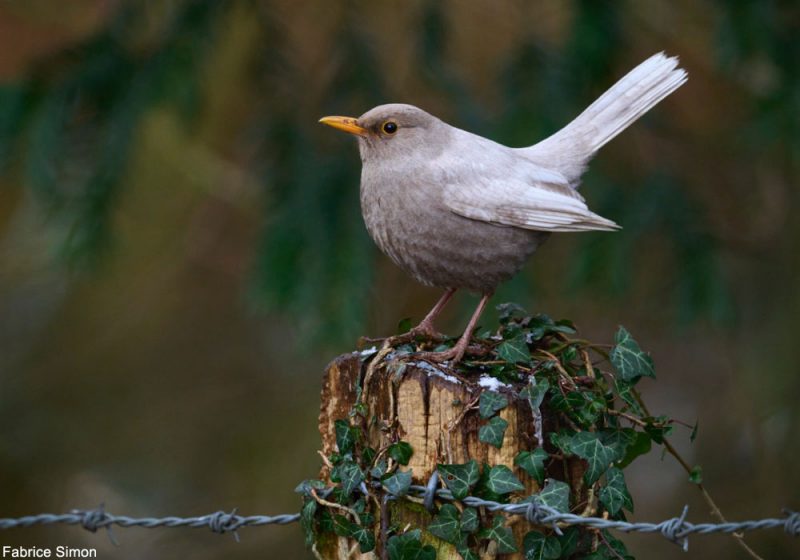
Merle noir (Turdus merula) femelle atteinte de dilution pigmentaire, Le Pin-au-Haras (Orne), le 24 janvier 2021.
Photographie : Fabrice Simon / www.fabricesimon.com
Introduction
Les couleurs des oiseaux ont une origine pigmentaire (les mélanines et les caroténoïdes sont les pigments les plus répandus), structurelle (= liée à la structure des plumes) ou une combinaison des deux. Les aberrations de couleurs peuvent être causées par une mutation génétique, une maladie, le stress, une blessure, une carence alimentaire, l’âge et/ou des caractéristiques environnementales (comme l’intensité du rayonnement solaire). Il existe plusieurs types d’anomalies de coloration, dont le grisonnement progressif, le leucisme, l’albinisme (les trois étant souvent confondues), le mélanisme, les mutations ino, brune et grizzle, et la dilution pigmentaire (ou réduction quantitative).
Cette dernière, assez rare, est d’origine génétique et touche plutôt les femelles : le plumage des oiseaux touchés semble « délavé », à cause d’une réduction de la production de mélanine.
Le 24 janvier 2021, Fabrice Simon (site web : www.fabricesimon.com) a observé et photographié au Pin-au-Haras (Orne) une femelle de Merle noir (Turdus merula) atteinte de dilution pigmentaire.
Après une énumération de plusieurs anomalies de coloration, nous présentons la dilution pigmentaire et nous abordons le cas de la femelle « aberrante » de Merle noir observée en Normandie. Nous remercions, Hein van Grouw, conservateur des collections ornithologiques du Natural History Museum (Grande-Bretagne), et qui mène depuis plusieurs années des recherches sur les aberrations de plumage chez les oiseaux d’Europe, pour ses informations.
Abstract
The colors of birds have a pigmentary origin (melanins and carotenoids being the most common pigments), structural (= related to structure of the feather) or a combination of both. Aberrations colours anomalies are generally quite frequent and can be caused by a genetic mutation, disease, stress, injury, particular diet, age and / or environmental characteristics (including the intensity of solar radiation). There are several types of discoloration abnormalities, including progressive graying, leucism, albinism (the three being often confused), melanism, ino, brown and grizzle mutations, and pigment dilution (or quantitative reduction).
The latter, quite rare, is of genetic origin and rather affects females: the plumage of these birds seems to be « washed out », due to a reduction in the production of melanin.
On the 24th of January 24 2021, near the Pin-au-Haras (Orne, Normandy), Fabrice Simon (website: www.fabricesimon.com) watched and photographed a female Blackbird (Turdus merula) suffering from pigment dilution.
After an enumeration of several coloring anomalies, we present the pigment dilution and we speak about the case of the aberrant female Blackbird discovered in Normandy. We would like to thank Hein van Grouw, curator of the ornithological collections of the Natural History Museum (Great Britain), and who is carrying out research on plumage aberrations in European birds for several years, for his information.
Poursuivez la lecture de cet article, en vous abonnant dès maintenant !
Découvrez les Archives d’Ornithomedia.com
Pour seulement 10,00 €TTC/an (ou 6,00 € les 6 mois)
Profitez de plusieurs centaines d’articles en accès illimité et sans aucun engagement.
Compléments
Contact
Fabrice Simon – Courriel : fabricesimon@me.com – Sites web : www.fabricesimon.com et www.goldenpeninsulatours.com
Ouvrages recommandés
- Le guide Ornitho de L. Svensson et al
- Oiseaux d’Europe, d’Afrique du Nord et du Moyen-Orient de H. Heinzel et al.
- Guide des oiseaux de France et d’Europe de Roger Tory Peterson et al.
Sources
- Hugo Touzé (2020). Des Rougegorges familiers Erithacus rubecula gris en France et ailleurs en Europe. Ornithos. Volume : 27. Numéro : 6. Pages :372-377.
- Peter Mikula, Alexander Csanády et Martin Hromada (2017). Aberrant plumage colouration in the birds from the collection of the Sarisske Museum Bardejov, Slovakia. Zoology and Ecology. Volume : 27. Numéro : 3-4. Pages : 223-227. www.researchgate.net
- Mohsen Vaez, Sarah A Follett, Bertrand Bed’hom, David Gourichon, Michèle Tixier-Boichard et Terry Burke (2008). A single point-mutation within the melanophilin gene causes the lavender plumage colour dilution phenotype in the chicken. BMC Genetics. Volume : 9. www.ncbi.nlm.nih.gov
- Hein van Grouw (2003). What Colour is that bird? The causes and recognition of common colour aberrations in birds. British Birds. Volume : 106. Pages : 17-29. www.researchgate.net
- MassAudubon. Color Abnormalities in Birds. www.massaudubon.org




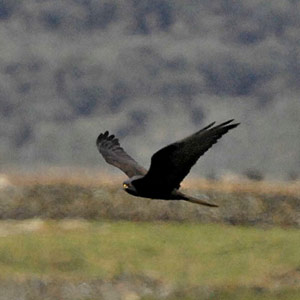
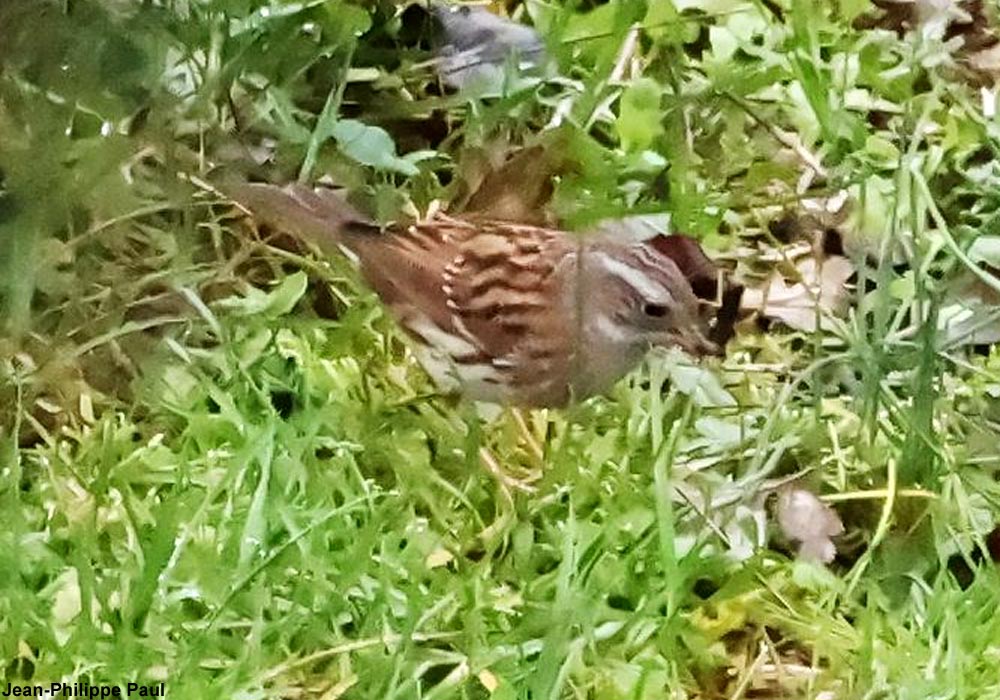
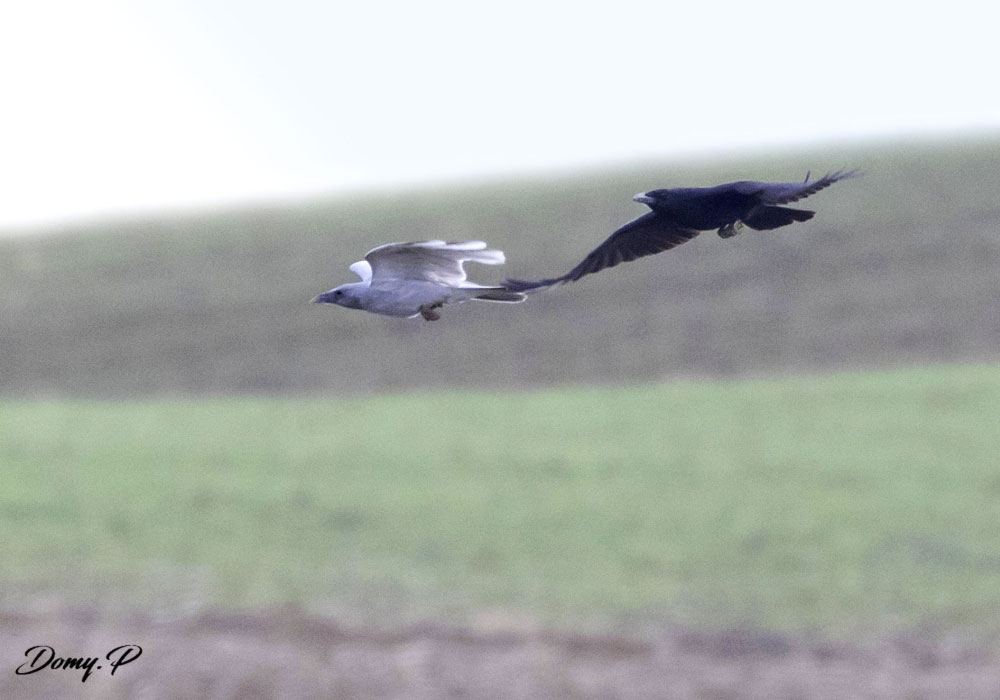
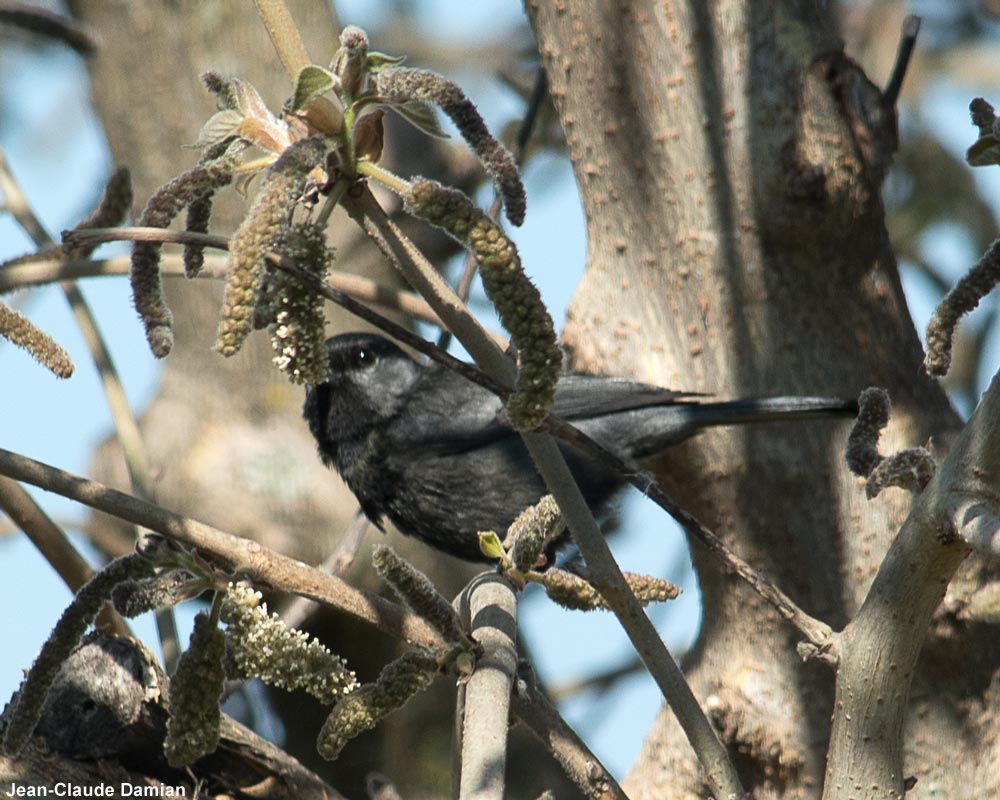

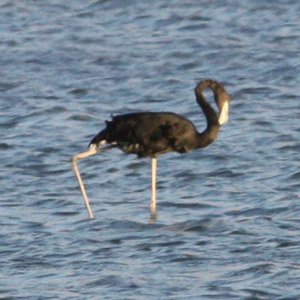
Aucun commentaire sur ce sujet
Participer à la discussion !